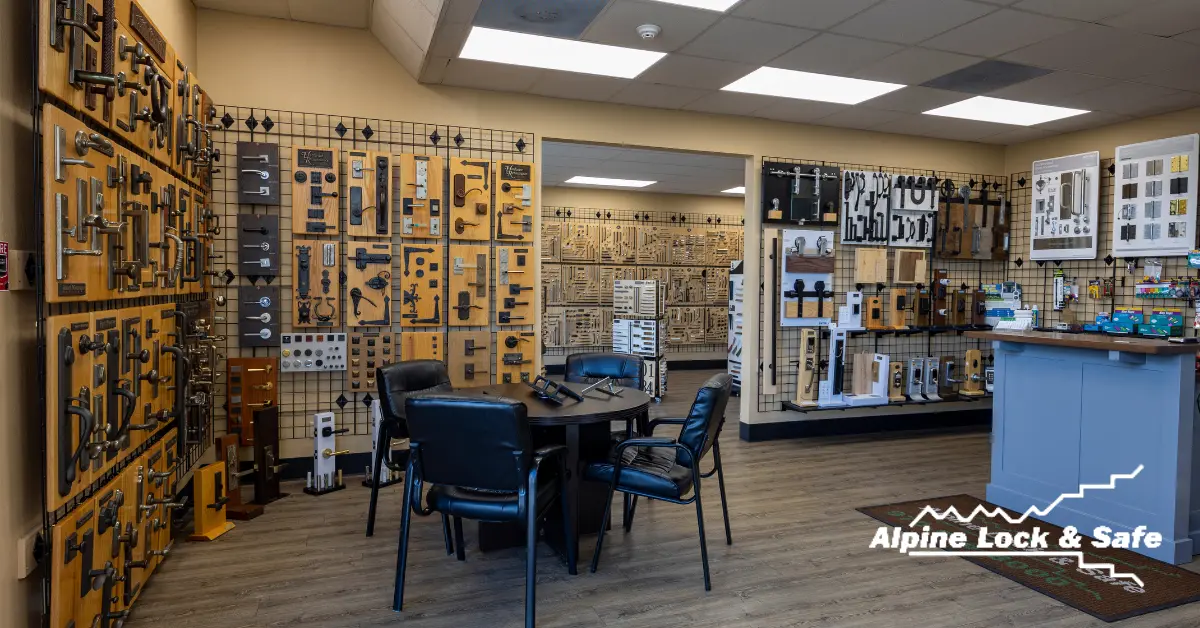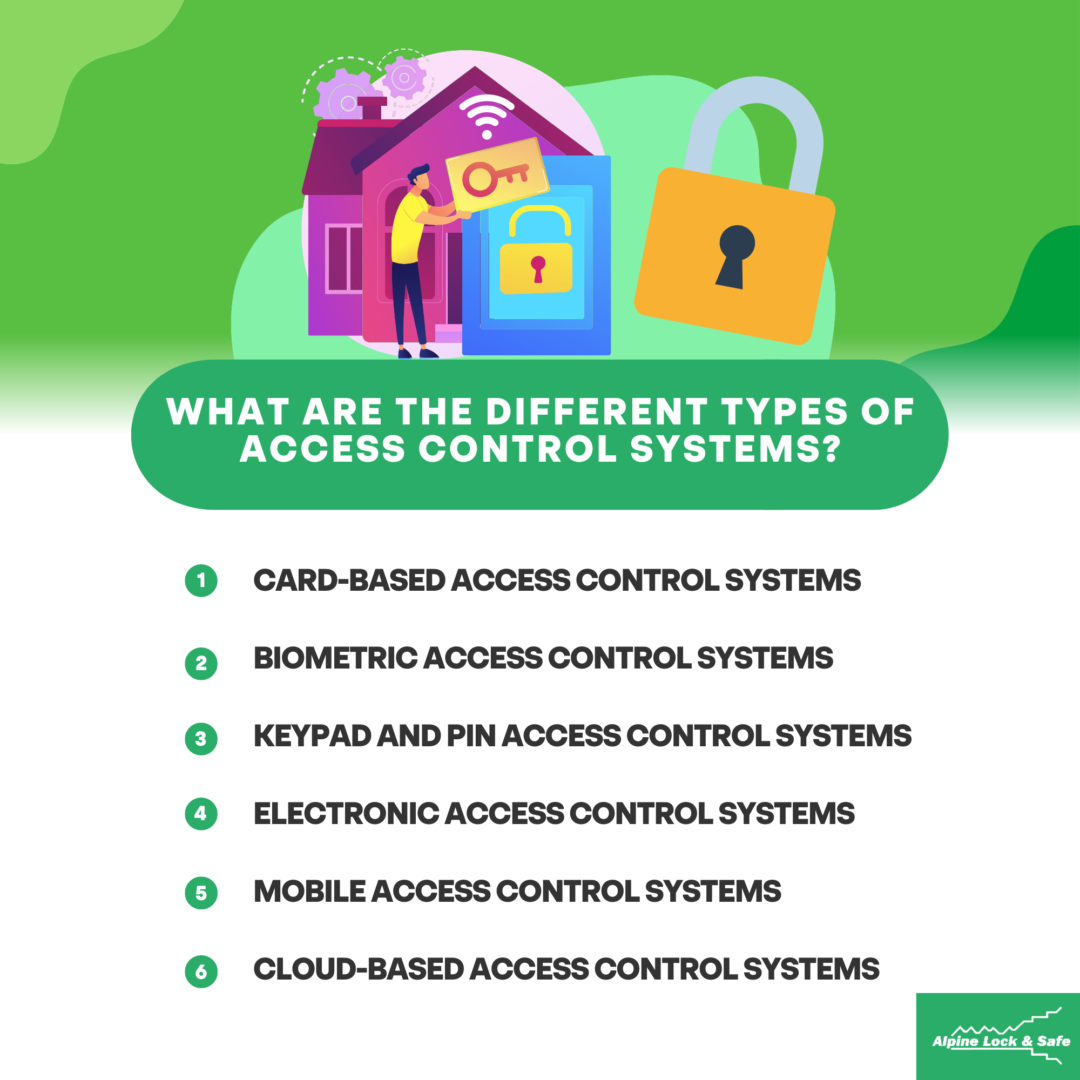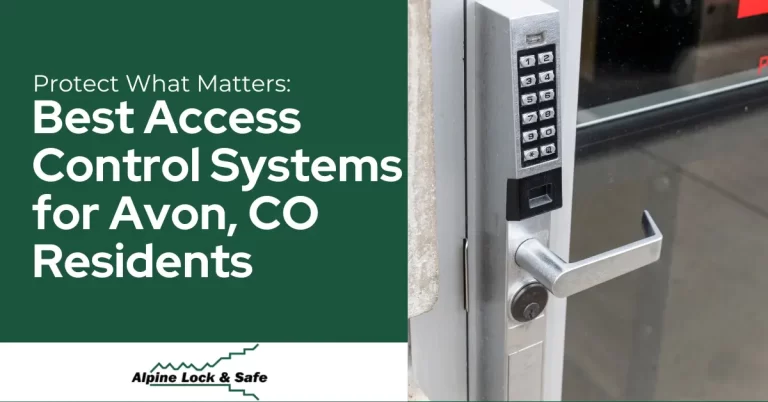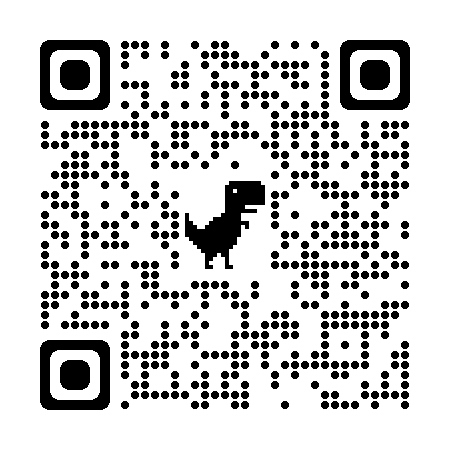Access control systems are an integral part of modern security measures, providing organizations with the means to safeguard their physical spaces. These systems are designed to control entry and exit points, monitor and record activities, and restrict access to authorized personnel.
In this blog post, we will delve into the different access control system types, their features, and how they can enhance security.
What Are Access Control Systems?
Access control systems are security solutions that regulate and manage entry to physical spaces. These systems prevent unauthorized access to certain areas or the whole area.
Traditionally, access control systems rely on locks and keys. However, with advancements in technology, modern access control systems have evolved, offering more sophisticated and efficient methods of managing access.
Why Are Access Control Systems Important?
These play a crucial role in physical security. They provide several benefits, including:
- Enhanced Security: Unauthorized entry, reducing the risk of security breaches including theft and vandalism can be prevented.
- Improved Monitoring: Many access control systems have integrated surveillance features, allowing for real-time monitoring of entry and exit points.
- Recorded Access Data: These systems often generate access logs, providing valuable data for security audits and investigations.
- Efficient Access Management: Access control systems can streamline the process of granting and revoking access. No need to worry about stolen keys or credentials.
- Flexibility: Modern access control systems offer flexible access control options, allowing organizations to customize access permissions based on individual roles and schedules.
What Are the Different Types of Access Control Systems?
It depends on the technology they use. The following are some of the most common types of door access control systems:
1. Card-Based Access Control Systems
Card-based access control systems use magnetic stripe, proximity, or smart cards in giving access to individuals. These systems require users to present their cards to a card reader, which then validates the credentials and permits entry.
The main advantage of card-based access control systems is their ease of use and flexibility. Access can be easily granted or revoked by reprogramming the card, and in case of loss or theft, it can be quickly deactivated.
However, card-based access control systems also have their limitations. Cards can be easily misplaced or duplicated, posing a risk to security. To address this, some systems incorporate additional security measures, such as PIN verification or biometric authentication.
2. Biometric Access Control Systems
Biometric access control systems use unique physical or behavioral characteristics. These come in the form of fingerprints, iris or retinal patterns, facial features, or voiceprints, to verify the identity of individuals seeking access.
These systems capture biometric data during the enrollment process and compare it with the data presented at the time of access. If the biometric information matches, the system grants entry.
These systems have a high level of security and accuracy, as biometric traits are difficult to duplicate or forge. They also eliminate the need for physical credentials.
However, biometric access control systems can be expensive to implement and may require additional time for enrollment and verification.
3. Keypad and Pin Access Control Systems
These require a unique personal identification number (PIN) on a keypad to gain entry. These systems are commonly used in various settings, including residential, commercial, and institutional facilities.
The main advantage of keypad and PIN access control systems is their simplicity and cost-effectiveness. They can be easily installed and managed, and PINs can be changed as needed, enhancing security.
However, the security of these systems relies on the secrecy of the PIN. If a PIN is compromised or shared, unauthorized individuals can gain access.
4. Electronic Access Control Systems
Electronic access control systems encompass a wide range of technologies, including:
- Door Access Control Systems: These systems secure entry points, such as doors, and can include various mechanisms, like electronic locks, keypads, or card readers.
- Gate Access Control Systems: Similar to door access control systems, gate access control systems are specifically designed to secure entry points, such as gates, in settings like residential communities or industrial facilities.
- Turnstile and Barrier Access Control Systems: These systems are commonly used in high-traffic areas to manage the flow of individuals. They can be integrated with different access control technologies, such as card readers or biometric scanners.
Various types of electronic access control systems are known for their versatility and integration capabilities. The ease of integration with other systems is evident in video surveillance and alarm systems, providing comprehensive security solutions.
5. Mobile Access Control Systems
Mobile access control systems leverage smartphones or other mobile devices as credentials, allowing users to gain access by presenting a virtual key or using wireless communication technologies, like Bluetooth or NFC (near-field communication).
These systems offer convenience, as most individuals carry their smartphones at all times. Mobile access control also enables remote access management, allowing authorized individuals to grant or revoke access from anywhere.
While mobile access control systems provide convenience, a disadvantage would be the robust security measures required to protect against device theft or unauthorized access.
6. Cloud-Based Access Control Systems
Cloud-based access control systems store access credentials and data in the cloud, eliminating the need for on-site servers and infrastructure. These systems are accessible through web browsers or dedicated software.
Cloud-based access control systems offer several advantages, including:
- Scalability: These systems can easily accommodate changes in the number of users and access points.
- Remote Management: Cloud-based systems allow for convenient access management from any location.
- Increased Redundancy: The cloud infrastructure provides data redundancy and backup, ensuring access data is secure and easily recovered.
However, the reliance on an internet connection is a critical consideration for cloud-based access control systems. A loss of connectivity can temporarily disrupt access.
What Access Control System Is Right for You?
The choice of access control system depends on various factors, including:
- Security Requirements: High-security facilities may benefit from biometric access control systems, while standard commercial buildings can opt for card-based or keypad systems.
- Size and Complexity of the Facility: Larger facilities may require more advanced access control systems with features like centralized management and integration with other security systems.
- Budget: The budget will influence the choice of access control system, as some technologies can be more costly to implement.
- User Convenience: The convenience of users should also be considered. Mobile access control systems may be preferred in settings with a tech-savvy user base.
It is advisable to consult with a professional security provider to assess what access control system is best for your security needs.
The Bottom Line
Implementing the right access control system is crucial for maintaining the security and integrity of physical spaces. The different types of access control systems offer different levels of security for the diverse needs of modern organizations.
While each system has its unique features and benefits, choosing the most appropriate one requires careful consideration of security requirements, budget, and user convenience.
Secure Your Home With Alpine Lock & Safe
Are you looking for a reliable access control system in Breckenridge, CO? Look no further! Alpine Lock & Safe provides top-notch access control and locksmith services. Contact us today to learn more about our offerings!






